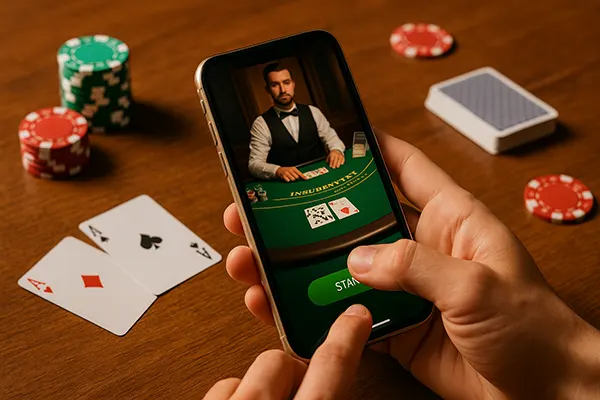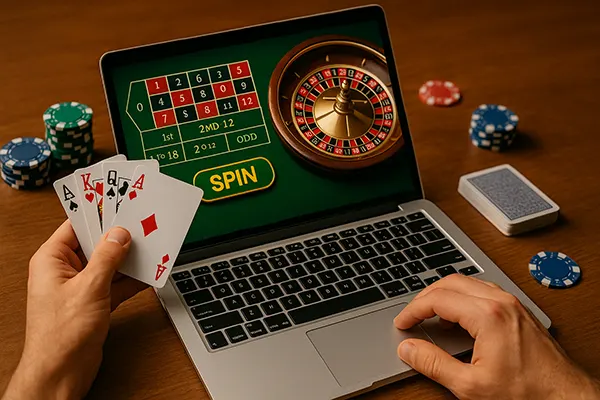
Blackjack in Mobile Apps: Is the Experience and Winning Probability Different?
Mobile gaming continues to shape how people engage with traditional card games, and blackjack has taken a prominent place in this evolution. With the rise of mobile apps, questions arise: does the blackjack experience differ from its desktop counterpart or land-based version? And are the chances of winning affected by the mobile format? Let’s explore the key aspects that define blackjack in mobile applications as of June 2025.
User Interface and Gameplay Dynamics
Modern blackjack apps offer smooth gameplay interfaces designed for smaller screens without compromising clarity or functionality. Developers prioritise intuitive layouts, touch-optimised controls, and clear chip placement zones, helping users to quickly understand how to participate in a round. Cards are usually large and well-spaced, even on compact displays.
Performance has also improved significantly in 2025, with native apps delivering near-instant responses and minimal lag. These enhancements ensure that users don’t face delays during crucial moments like splitting pairs or doubling down, which is vital for a fair gaming experience.
Moreover, many mobile blackjack apps now include adjustable settings—such as sound, card speed, and display preferences—allowing players to personalise their sessions for comfort and focus. This customisation contributes to user satisfaction and extended gameplay.
How Mobile Influences User Behaviour
Playing blackjack on a mobile device often means more frequent but shorter gaming sessions. Because people tend to use mobile apps during breaks, commutes or downtime, the average session duration is lower than on desktop. This affects the pace of gameplay, encouraging quicker decision-making and simplified strategy application.
Additionally, mobile users are more likely to explore demo versions before engaging with real-money tables. This cautious approach helps them learn the interface and rules, ultimately making for a more confident experience when switching to standard play.
The flexibility of mobile blackjack has expanded its audience, attracting casual players who wouldn’t necessarily seek out the game elsewhere. With accessibility growing, the variety of experience levels among players has also widened.
RNG and Live Dealer Blackjack on Mobile
In mobile blackjack, players typically choose between two main types: RNG (Random Number Generator) and live dealer tables. RNG-based blackjack uses certified algorithms to replicate fair card dealing, with many apps undergoing regular audits from third-party testing agencies like eCOGRA or iTech Labs to ensure compliance and randomness.
As of June 2025, live dealer blackjack apps have become more stable and visually engaging thanks to stronger internet infrastructure and better camera integration. High-definition streams and multi-angle views are now standard, giving users an experience close to visiting a physical casino.
Regardless of the format, the rules remain consistent with traditional blackjack: payouts, splits, double-downs, and insurance operate the same way. This consistency helps maintain fairness and avoids misleading scenarios that could confuse or disadvantage users.
Do Winning Odds Differ on Mobile?
Statistically, the odds in mobile blackjack mirror those found in other formats, assuming the same rule set and deck number. A standard game with six decks and dealer stands on soft 17 yields a house edge of approximately 0.5% when played with basic strategy—on any device.
Differences may emerge if the app modifies rules such as blackjack payout rates (e.g., 6:5 instead of 3:2) or disallows certain options like surrender or doubling after split. These changes affect the mathematical edge rather than the platform itself.
It’s vital for players to check rule variations before playing, as not all apps display this information clearly. Choosing a well-reviewed and regulated application is essential for preserving fair odds and transparent play conditions.

Security, Privacy, and Responsible Gaming Tools
By 2025, reputable blackjack apps implement high-standard encryption protocols (such as TLS 1.3) and biometric log-in features to ensure secure access. User data is protected through multi-layer authentication systems, and financial transactions are monitored for suspicious activity.
Most developers now integrate self-exclusion features, deposit limits, and reality checks, aligning with responsible gaming principles encouraged by regulatory authorities. These tools are readily available in app settings and aim to prevent excessive play.
Importantly, mobile platforms maintain compatibility with local laws. Geo-location services verify user jurisdiction, ensuring that only individuals in legally permitted regions access real-money blackjack games. This legal compliance is central to app legitimacy.
The Role of Licensing and Regulation
To ensure fairness and security, legitimate mobile blackjack apps operate under licences issued by respected authorities such as the UK Gambling Commission, Malta Gaming Authority, or the Gibraltar Regulatory Authority. These licences enforce strict operational standards and regular audits.
In 2025, transparency has become a key indicator of trustworthiness. Apps now often include sections explaining their licencing, auditing partners, and game fairness certifications—elements that users should look for before engaging with any mobile blackjack application.
Unregulated apps pose risks including unfair games, lack of payout guarantees, and poor data protection. Players are advised to avoid such apps even if they appear polished, as visual design is not an indicator of operational integrity.
